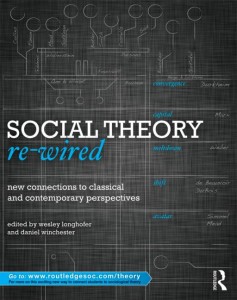
As sociologist Jessie Daniels notes in a new TSP Special Feature, showing a film in class isn’t just a day off. Instead, films are visual texts, and Jessie suggests many documentaries that could be used in the classroom. Several readers commented, so we thought we would compile all of them into a single post.
Intro Soc Class:
“49 Up” (2005)
“The Split Horn: Life of a Hmong Shaman in America” (2001)
“Quiet Rage” (1991)
“The Devil’s Playground” (2002)
“We Live in Public” (2009)
Globalization/Neoliberalism:
“The End of Poverty?” (2008)
“Garbage Dreams” (2009)
Gender:
“HIP-HOP:Beyond Beats & Rhymes” (2006)
“Southern Comfort” (2001)
“The Pill” (1999)
“Chisolm ‘72: Unbought & Unbossed” (2004)
“Heart of the Game” (2005)
Education:
“Resolved” (2007)
“The Lottery” (2010)
Prison Documentaries for Crime and Punishment Courses
Sweethearts of the Prison Rodeo (2009)
The Dhamma Brothers (2008)
The Farm (1998)
Writ Writer (2008)
Ghosts of Attica (2001)
Re-entry Documentary
Omar and Pete (prison reentry) (2005)
Death & Dying
“Ikiru” (1952)
“The Seventh Seal” (1957)
“Of Gods and Men” (2010)
“Tell Me a Riddle” (1980)
“Dead Man” (1995)
Food/Labor
Harvest of Shame (1960)
American Harvest (2008)
The Harvest/La Cosecha (2011)
New Harvest, Old Shame (1990)
Various Others from TSP Readers:
From Nathan Palmer:
Race The Power of an Illusion Pvert 3: The House We Live In (2003)
My favorite film to show how historic and institutional racial discrimination is affecting us to this day. It does a great job connecting whiteness to citizenship and explaining red lining/block busting. I use it in my 101s and race & ethnicity classes.
The Color of Fear (1994)
An oldie, but a goodie. The film is a recording of 9 men of different racial ethnic backgrounds talking candidly about race. My only critique of the film is there are no women included and multiple racial groups are left out as well.
Food Inc. (2008)
More than anything I want my students in my environmental sociology class to understand how social inequality and environmental degradation are connected. The portion of this film dedicated to the mistreatment of farmers, factory workers, and the animals/land they use is priceless.
The Battle for Whiteclay (2008)
This independent film documents how 4 liquor stores in Whiteclay, NE (a town of 14 people) sell 12,500 cans of beer a day. The off-sale liquor stores take advantage of their proximity to the Pine Ridge Reservation, who banned alcohol sales and possession on their lands. Despite there being no legal place for the 12,500 cans to be consumed (Whiteclay only has off-sale establishments) there have been nearly no arrests while the liquor dealers make millions of dollars annually. The video is an excellent example of government corruption, exploitation, and selective law enforcement.
Inside Job (2010)
The 2008 credit crisis is a perfect example of how changes at the institutional level have a cascading affect all the way down to the individual. It also gets at how social problems are socially constructed. This film more than any other explains the complex crisis in a way that is approachable.
From Andrew Lindner:
“Manufactured Landscapes” (2006), based on the work of photographer Edward Burtynsky, it has some unbelievable footage from Chinese factories. Great for teaching about globalization and capitalism.
“Paradise Lost: The Child Murders at Robin Hood Hills” (1996) – a classic documentary on the (now recently freed) West Memphis Three. A powerful and disturbing illustration of stigma and social control.
“The War Room” (1993) – an insider’s look into Bill Clinton’s path to victory in the 1992 primaries. I use this in my “Political Sociology” course to talk about rhetoric, political strategy, and political professionals.
“Flow: For Love of Water” (2008) – a terrifying documentary on our dwindling water supply and how it is owned and managed by corporations for profit. Great for discussions of capitalism, privatization, or environmental sociology.
“Secret of the Wild Child” (1994) – an outstanding PBS/Nova documentary on feral children, particularly the famous Genie case mentioned in almost every sociology text. Challenges many students assumptions about socialization.
Clip Ideas from Carolyn Liebler:
Little Miss Sunshine – for students to pick out examples of material culture, non-material culture, subculture, counterculture, face and face work, front stage, and back stage behavior.
Wedding Crashers – as a way to apply the following theories of deviance: rational choice, labeling theory, differential association theory, and obligatory action.
The beginning of Ghostbusters – to apply the three major tenets of ethical research methods
Fiddler on the Roof – to play “spot that social institution!” and talk about how social institutions are interrelated.
From Joe Soss:
At the River I Stand
Merchants of Cool
Occupation: Dreamland
Stonewall Uprising
Inside Job
 Looking for a new book to update your social theory course or one to simply jumpstart your first time teaching it? Former Contexts Graduate Editors Wesley Longhofer and Daniel Winchester have created a new book, Social Theory Re-Wired: New Connections to Classical and Contemporary Perspectives (Routledge), which offers a new and exciting way to teach social theory to today’s students. Full disclosure here: due to their work on TSP, we’re not exactly unbiased. We’re proud!
Looking for a new book to update your social theory course or one to simply jumpstart your first time teaching it? Former Contexts Graduate Editors Wesley Longhofer and Daniel Winchester have created a new book, Social Theory Re-Wired: New Connections to Classical and Contemporary Perspectives (Routledge), which offers a new and exciting way to teach social theory to today’s students. Full disclosure here: due to their work on TSP, we’re not exactly unbiased. We’re proud!




